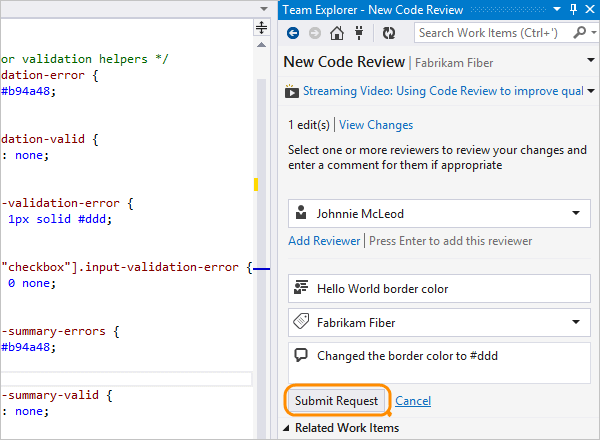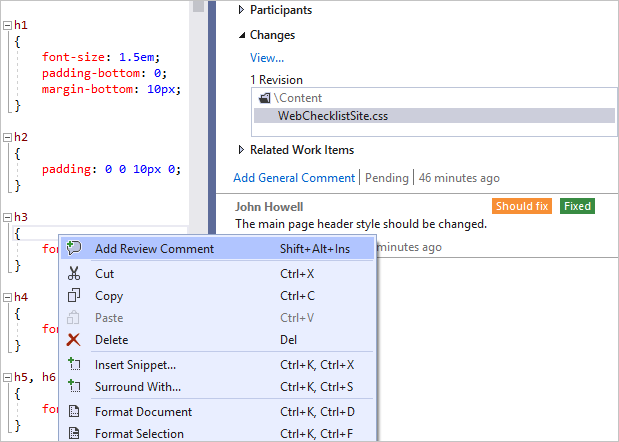Visual Studio Code Review vs Review Assistant
The article compares Visual Studio's built-in code review tool against Devart's Review Assistant. Both tools provide similar experience but Review Assistant has extra features and broader version control system coverage.
First, let us take a quick look at Visual Studio's built-in code review tool and Devart's Review Assistant. Both tools are designed to help developers to create review requests and respond to them without leaving the IDE.
Visual Studio
Microsoft introduced the code review feature in Visual Studio 2012. Back then it was available only in Premium and Ultimate editions. Since Visual Studio 2015 the code review feature is also available in Professional and Community editions.
The code review feature is integrated into the Team Explorer window. Code review requests show up on the My Work page. The article Get your code reviewed with Visual Studio on Microsoft website will give you an insight into its capabilities.
Here is how the process of creating a review request looks in Visual Studio.

Review Assistant
Review Assistant is a downloadable extension to Visual Studio. It supports Visual Studio 2019, as well as Visual Studios 2017, 2015, 2013, 2012, and 2010. Review Assistant integrates into all major editions of Visual Studio: Enterprise, Professional, and Community. Furthermore, Review Assistant is compatible with Visual Studio Integrated Shell 2015 and 2013.
Review Assistant adds the Code Review Board window to an IDE. The window is designed to manage all reviews available to a user. The article Iterative Review with Defect Correction in the product documentation provides a general overview of typical workflow in Review Assistant.
Here is how the process of creating a review request looks in Review Assistant.

Version Control System Support
Please note that Visual Studio's native code review functionality will work only with Team Foundation Server. Therefore, if you don't use TFS in your work, you should certainly download Review Assistant.
Visual Studio
Technically, Microsoft supports code review for:
- TFVC
- Git
But if you work with Git, you cannot perform review directly in your IDE. For Git, Microsoft suggests using pull requests. It means that Visual Studio does not provide a single user-experience for both supported systems.
Review Assistant
Review Assistant supports the following VCSs:
- TFVC
- Git
- Subversion
- Mercurial
- Perforce
Feature Comparison Table
The following table provides a side-by-side comparison of the basic functionality of Review Assistant and Visual Studio's built-in code review tool.
| Feature | Code Review | Review Assistant |
|---|---|---|
| Review single changeset |
|
|
| Add General File Comment |
|
|
| Add overall review comment |
|
|
| Add and see review comments in code editor |
|
|
| Add-hoc comments |
|
|
| Review multiple changesets |
|
|
| Pre-commit code review |
|
|
| Initial Review |
|
|
| Multi assignees review |
|
|
| TFS policy to prevent check-in w/o code review |
|
|
| Review code associated with a work item |
|
|
| Multi-iteration code reviews |
|
|
| Formal code reviews with a moderator role |
|
|
| Watching a review with a Watcher role |
|
|
| Comment types |
|
|
| Review filtering |
|
|
| Notifications of review events |
|
|
| Statistics and reports |
|
|
| Code Review links |
|
|
| Export Review |
|
|
Conclusion
Microsoft provides a handy feature for code review inside the Visual Studio IDE. Review Assistant, though providing a similar code review user experience, supports work scenarios that are not covered by the Microsoft's tool. Moreover, the version control systems support is broader in Review Assistant.
Download Review Assistant and start reviewing code.